Electromagnetic Shielding Effectiveness and Conductivity of PTFE/Ag/MWCNT Conductive Fabrics Using the Screen Printing Method
Abstract
1. Introduction
2. Experimental Details
2.1. Preparation of Ag/MWCNT Hybrid Conductive Paste
2.2. Production of Conductive Laminated Fabrics
2.3. Surface Resistivity, Volume Resistivity and Electrical Conductivity Measurements
2.4. Morphology of PTFE/Ag/MWCNT Conductive Composite Film
2.5. Measurement of the Laminated Fabric of PTFE/Ag/MWCNT Conductive Composite Film
3. Results and Discussion
3.1. Morphological Analysis of PTFE/Ag/MWCNT Composite Film
3.2. Electrical and Mechanical Properties of PTFE/Ag/MWCNT Composite Film
3.3. EMSE Analysis of PTFE/Ag/MWCNT Conductive Laminated Fabrics
3.4. Thermal Analysis of PTFE/Ag/MWCNT Conductive Laminated Fabrics
4. Conclusions
Author Contributions
Funding
Acknowledgments
Conflicts of Interest
References
- Shukla, V. Review of electromagnetic interference shielding materials fabricated by iron ingredients. Nanoscale Adv. 2019, 1, 1640–1671. [Google Scholar] [CrossRef]
- Al-Falahy, N.; Alani, O.Y. Technologies for 5G Networks: Challenges and Opportunities. IT Prof. 2017, 19, 12–20. [Google Scholar] [CrossRef]
- Zhao, K.; Ying, Z.; He, S. EMF Exposure Study Concerning mmWave Phased Array in Mobile Devices for 5G Communication. IEEE Antennas Wirel. Propag. Lett. 2016, 15, 1132–1135. [Google Scholar] [CrossRef]
- He, L.-X.; Tjong, S.-C. Internal field emission and conductivity relaxation in carbon nanofiber filled polymer system. Synth. Met. 2010, 160, 2085–2088. [Google Scholar] [CrossRef]
- Hashemi, R.; Weng, G.J. A theoretical treatment of graphene nanocomposites with percolation threshold, tunneling-assisted conductivity and microcapacitor effect in AC and DC electrical settings. Carbon 2016, 96, 474–490. [Google Scholar] [CrossRef]
- Bilotti, E.; Zhang, H.; Deng, H.; Zhang, R.; Fu, Q.; Peijs, T. Controlling the dynamic percolation of carbon nanotube based conductive polymer composites by addition of secondary nanofillers: The effect on electrical conductivity and tuneable sensing behavior. Compos. Sci. Technol. 2013, 74, 85–90. [Google Scholar] [CrossRef]
- Chun, K.-Y.; Oh, Y.; Rho, J.; Ahn, J.-H.; Kim, Y.-J.; Choi, H.R.; Naik, S. Highly conductive, printable and stretchable composite films of carbon nanotubes and silver. Nat. Nanotechnol. 2010, 28, 853–857. [Google Scholar] [CrossRef]
- Maiti, S.; Suin, S.; Shrivastava, N.K.; Khatua, B.B. A strategy to achieve high electromagnetic interference shielding and ultra low percolation in multiwall carbon nanotube-polycarbonate composites through selective localization of carbon nanotubes. RSC Adv. 2014, 4, 7979–7990. [Google Scholar] [CrossRef]
- Rosca, I.D.; Hoa, S.V. Highly conductive multiwall carbon nanotube and epoxy composites produced by three-roll milling. Carbon 2009, 47, 1958–1968. [Google Scholar] [CrossRef]
- Ma, R.; Kwon, S.; Zheng, Q.; Kwon, H.Y.; Kim, J.I.; Choi, H.R.; Baik, S. Carbon-Nanotube/Silver Networks in Nitrile Butadiene Rubber for Highly Conductive Flexible Adhesives. Adv. Mater. 2012, 24, 3344–3349. [Google Scholar] [CrossRef]
- Pawar, S.P.; Biswas, S.; Kar, G.P.; Bose, S. High frequency millimetre wave absorbers derived from polymeric nanocomposites. Polymer 2016, 84, 398–419. [Google Scholar] [CrossRef]
- Hassan, M.; Afify, A.S.; Ataalla, M.; Milanese, D.; Tulliani, J.-M. New ZnO-Based Glass Ceramic Sensor for H2 and NO2 Detection. Sensors 2017, 17, 2538. [Google Scholar] [CrossRef] [PubMed]
- Afify, A.S.; Ahmad, S.; Khushnood, R.A.; Jagdale, P.; Tulliani, J.-M. Elaboration and characterization of novel humidity sensor based on micro-carbonized bamboo particles. Sens. Actuators B Chem. 2017, 239, 1251–1256. [Google Scholar] [CrossRef]
- Erath, D.; Filipović, A.; Retzlaff, M.; Goetz, A.K.; Clement, F.; Biro, D.; Preu, R. Advanced screen printing technique for high definition front side metallization of crystalline silicon solar cells. Sol. Energy Mater. Sol. Cells 2010, 94, 57–61. [Google Scholar] [CrossRef]
- Hsu, C.-P.; Guo, R.-H.; Hua, C.-C.; Shih, C.-L.; Chen, W.-T.; Chang, T.-I. Effect of polymer binders in screen printing technique of silver pastes. J. Polym. Res. 2013, 20, 277. [Google Scholar] [CrossRef]
- Kolanowska, A.; Janas, D.; Herman, A.P.; Jędrysiak, R.G.; Giżewski, T.; Boncel, S. From blackness to invisibility—Carbon nanotubes role in the attenuation of and shielding from radio waves for stealth technology. Carbon 2018, 126, 31–52. [Google Scholar] [CrossRef]
- Kim, Y.J.; An, K.J.; Suh, K.S.; Choi, H.-D.; Kwon, J.H.; Chung, Y.-C.; Kim, W.N.; Lee, A.-K.; Choi, J.-I.; Yoon, H.G. Hybridization of oxidized MWNT and silver powder in polyurethane matrix for electromagnetic interference shielding application. IEEE Trans. Electromagn. Compat. 2005, 47, 872–879. [Google Scholar] [CrossRef]
- Shajari, S.; Arjmand, M.; Pawar, S.P.; Sundararaj, U.; Sudak, L.J. Synergistic effect of hybrid stainless steel fiber and carbon nanotube on mechanical properties and electromagnetic interference shielding of polypropylene nanocomposites. Compos. Part B 2019, 165, 662–670. [Google Scholar] [CrossRef]
- Kwon, S.; Ma, R.; Kim, U.; Choi, H.R.; Baik, S. Flexible electromagnetic interference shields made of silver flakes, carbon nanotubes and nitrile butadiene rubber. Carbon 2014, 68, 118–124. [Google Scholar] [CrossRef]
- Lin, M.; Gai, Y.; Xiao, D.; Tan, H.; Zhao, Y. Preparation of pristine graphene paste for screen printing patterns with high conductivity. Chem. Phys. Lett. 2018, 713, 98–104. [Google Scholar] [CrossRef]
- Jiang, Y.; Song, H.; Xu, R. Research on the dispersion of carbon nanotubes by ultrasonic oscillation, surfactant and centrifugation respectively and fiscal policies for its industrial development. Ultrason. Sonochem. 2018, 48, 30–38. [Google Scholar] [CrossRef] [PubMed]
- Kirkpatrick, S. Percolation and Conduction. Rev. Mod. Phys. 1973, 45, 574–588. [Google Scholar] [CrossRef]
- Cheng, H.-C.; Chen, C.-R.; Hsu, S.-H.; Cheng, K.-B. The electromagnetic shielding effectiveness of laminated fabrics using electronic printing. Polym. Compos. 2020, 41, 2568–2577. [Google Scholar] [CrossRef]
- Choi, J.H.; Lee, K.Y.; Kim, S.W. Ultra-bendable and durable Graphene—Urethane composite/silver nanowire film for flexible transparent electrodes and electromagnetic-interference shielding. Compos. Part B Eng. 2019, 177, 107406. [Google Scholar] [CrossRef]
- Leterrier, Y. 1-Mechanics of curvature and strain in flexible organic electronic devices. In Handbook of Flexible Organic Electronics: Materials Manufacturing and Applications; Woodhead Publishing: Oxford, UK, 2015; Volume 3, pp. 3–36. [Google Scholar]
- Hewlett-Packard Co. HP 8752 Operation Manual, Performance Tests; Hewlett-Packard Co.: Palo Alto, CA, USA, 1996; Volume 4. [Google Scholar]
- Cheng, K.-B.; Ramakrishna, S.; Ueng, T.H.; Lee, M.L. Electromagnetic Shielding Effectiveness of the Stainless Steel/Polyester Woven Fabrics. Text. Res. J. 2001, 71, 42–49. [Google Scholar] [CrossRef]
- Hes, L.; Araujo, M.D.; Djulay, V.V. Effect of Mutual Bonding of Textile Layers on Thermal Insulation and Thermal Contact Properties of Fabric Assemblies. Text. Res. J. 1996, 66, 245–250. [Google Scholar] [CrossRef]
- Banerjee, D.; Chattopadhyay, S.K.; Tuli, S. Infrared thermography in material research—A review of textile applications. Indian J. Fibre Text. Res. 2013, 38, 427–437. [Google Scholar]


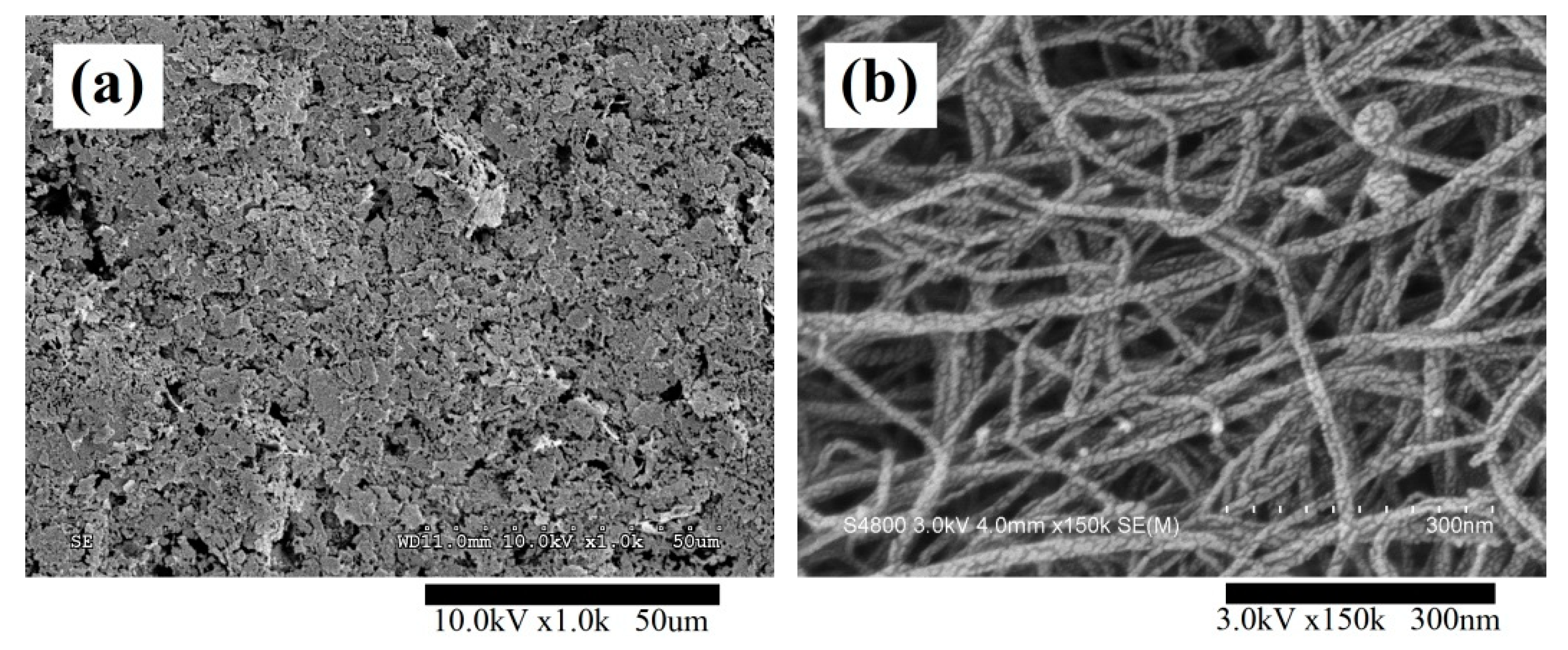

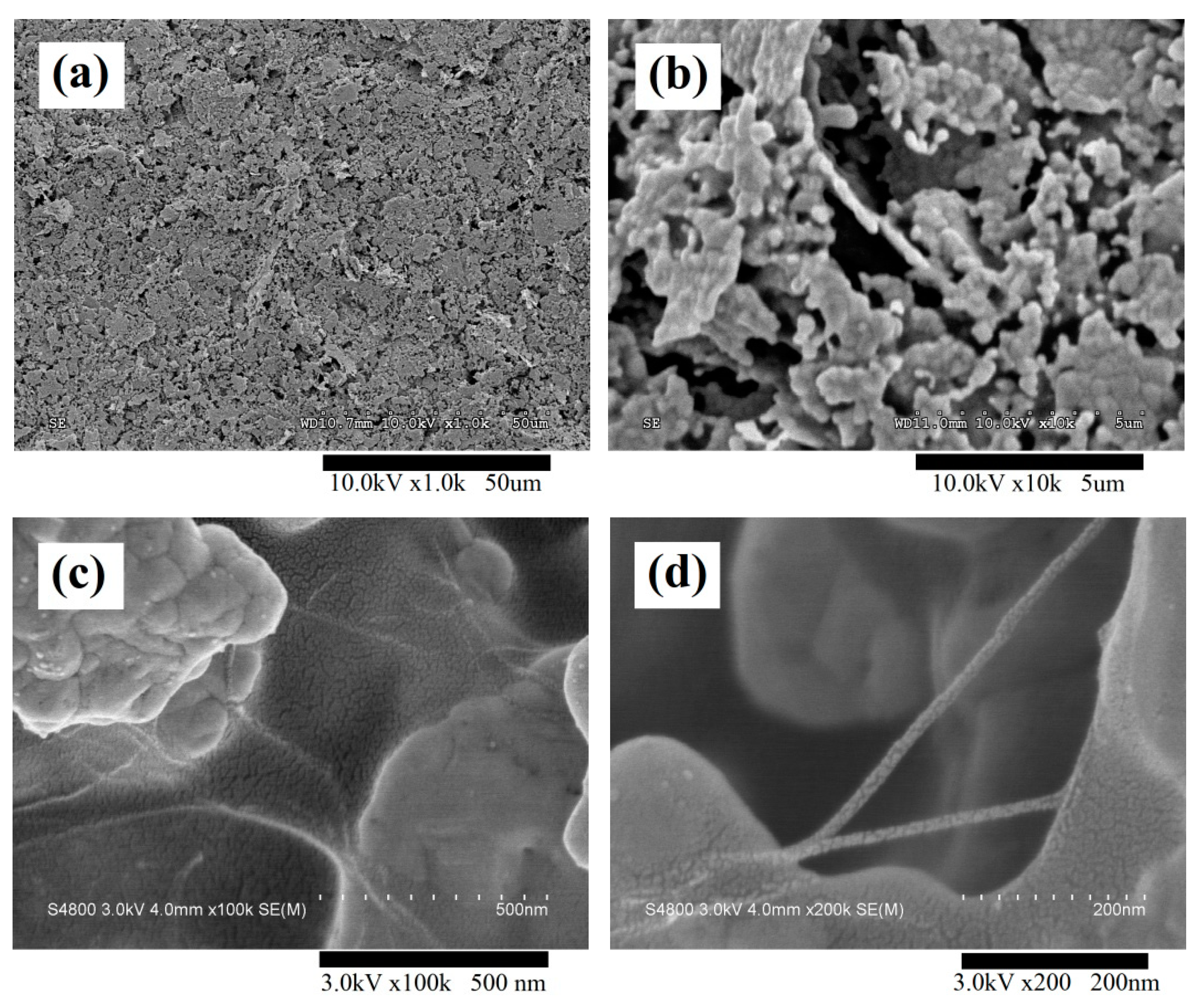
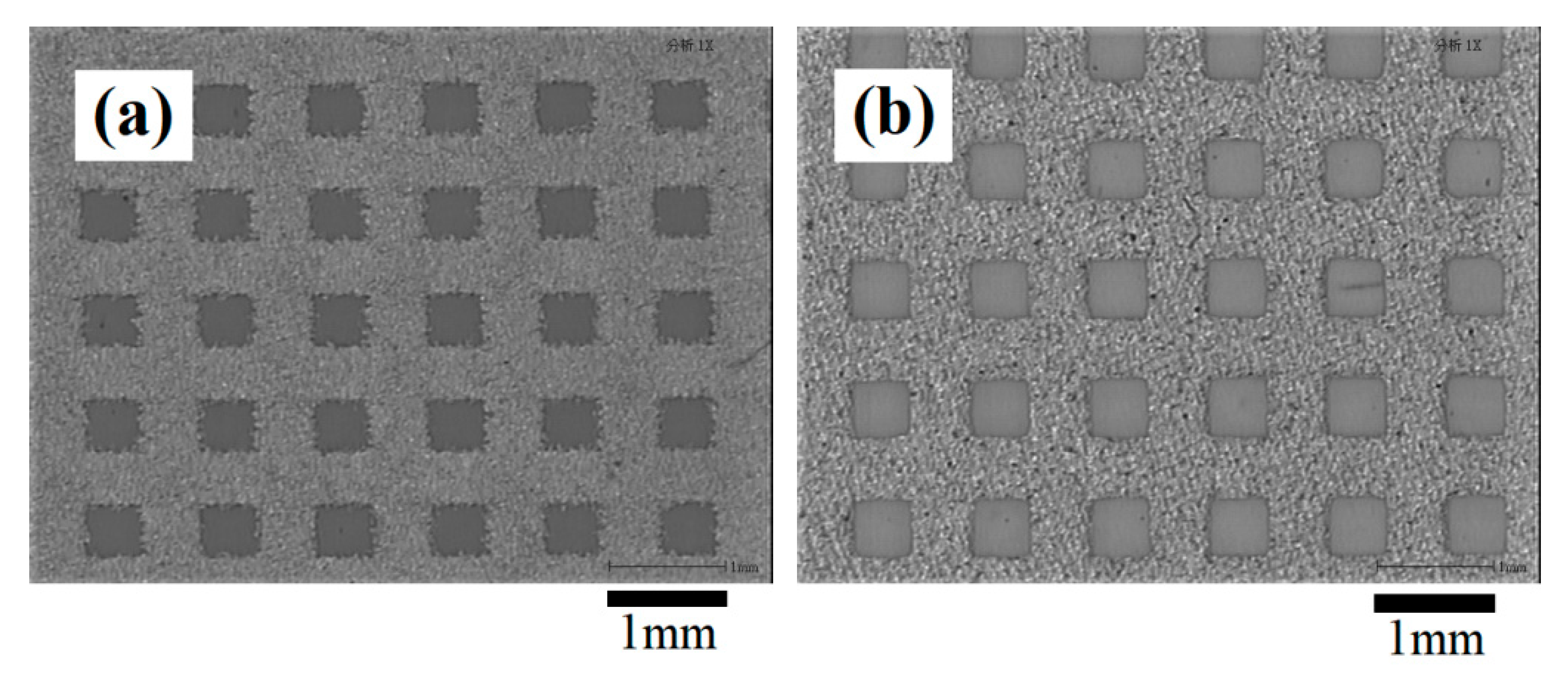


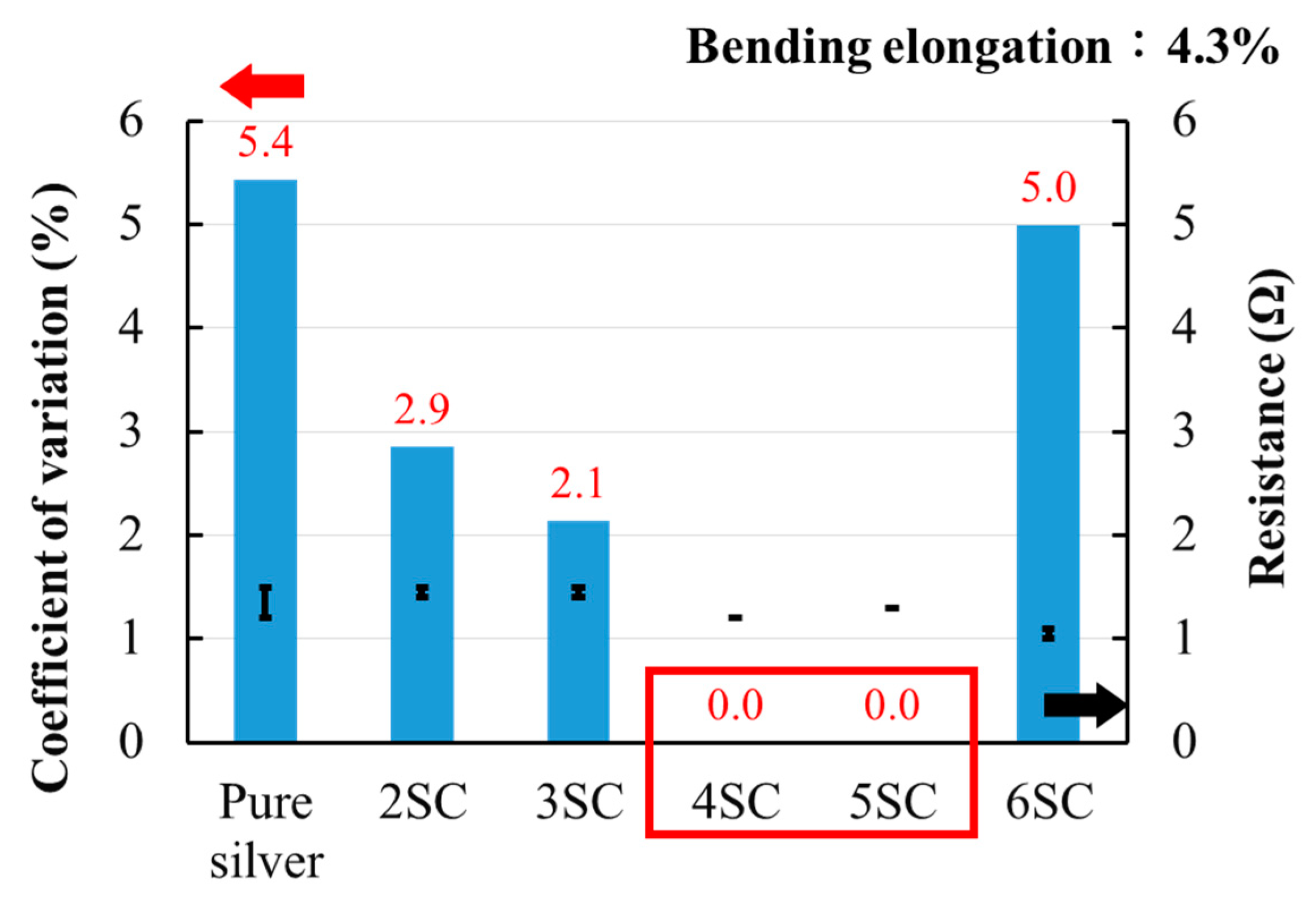
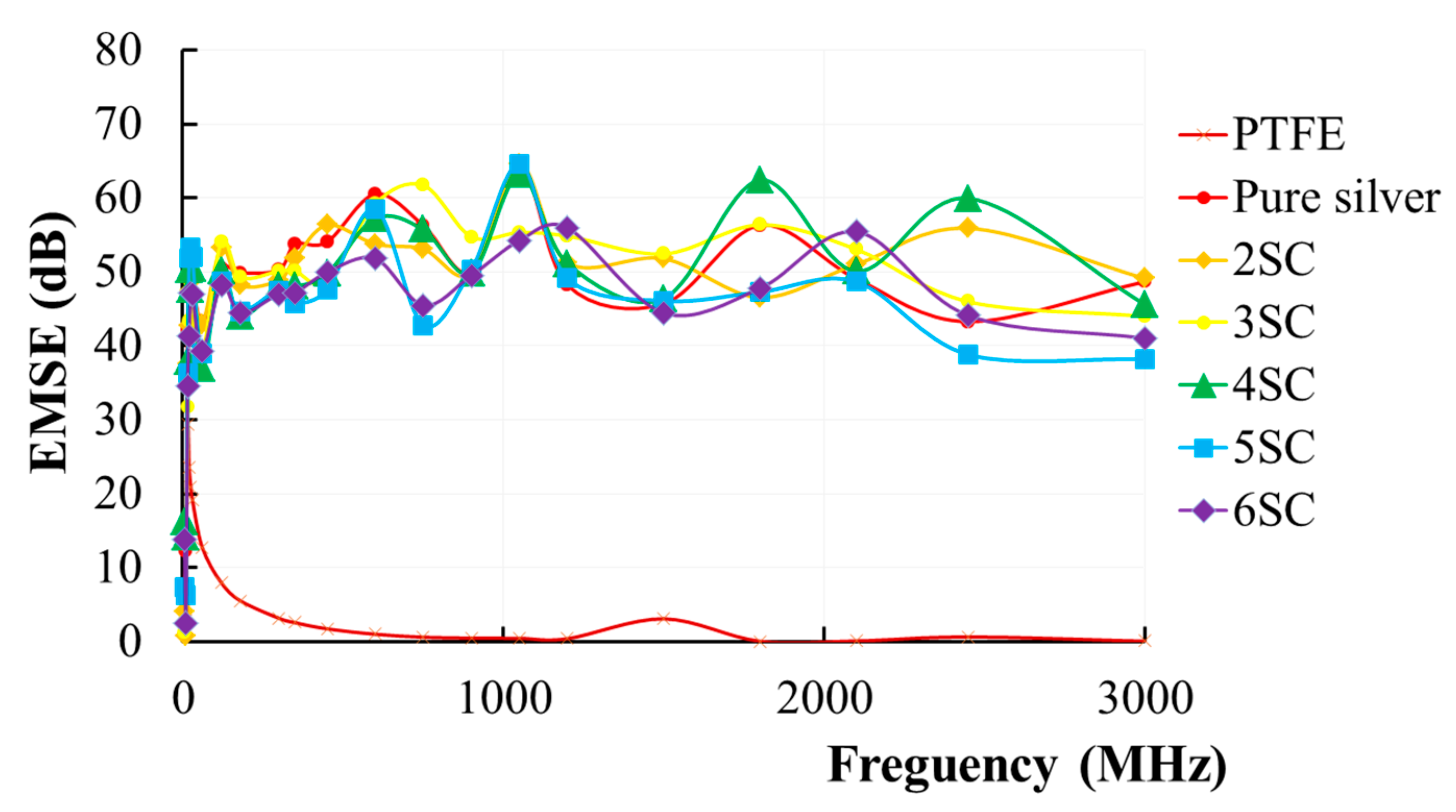

| Silver Paste (g) | *1 SCSP (wt%) | MWCNT Dispersion (g) | *2 SCM (wt%) | SCM/SCSP (wt%) | |
|---|---|---|---|---|---|
| Reference | 10 | 6.8 | - | - | - |
| 2SC | 9.98 | 6.786 | 0.35 | 0.014 | 0.2 |
| 3SC | 9.97 | 6.78 | 0.5 | 0.02 | 0.3 |
| 4SC | 9.96 | 6.773 | 0.68 | 0.027 | 0.4 |
| 5SC | 9.95 | 6.766 | 0.85 | 0.034 | 0.5 |
| 6SC | 9.94 | 6.759 | 1.03 | 0.041 | 0.6 |
| Application/Unit: dB | PTFE | Pure silver | 2SC | 3SC | 4SC | 5SC | 6SC |
|---|---|---|---|---|---|---|---|
| 300 MHz (Cordless telephone) | 3.1 | 50.3 | 48.9 | 50.1 | 48.0 | 47.5 | 47.1 |
| 1800 MHz (4G mobile phone) | 0.1 | 56.3 | 46.5 | 56.4 | 62.4 | 47.3 | 47.8 |
| 2450 MHz (Microwave oven) | 0.6 | 43.3 | 55.9 | 46 | 59.9 | 38.8 | 44.1 |
| Type | Class 5 Excellent | Class 4 Very Good | Class 3 Good | Class 2 Moderate | Class 2 Fair |
|---|---|---|---|---|---|
| EMSE ranges | SE > 60 | 60 ≥ SE > 50 | 50 ≥ SE > 40 | 40 ≥ SE > 30 | 30 ≥ SE > 20 |
| Sample/Data | Pure Silver | 2SC | 3SC | 4SC | 5SC | 6SC |
|---|---|---|---|---|---|---|
| Thermal conductivity (mW/m.K) | 35.5 | 36.3 | 36.7 | 37.1 | 36.5 | 36.2 |
| Thermal diffusivity (mm2/s) | 0.132 | 0.157 | 0.217 | 0.240 | 0.200 | 0.118 |
| Sample | T0 | T10 | T20 | ΔT1 (T10-T0) | ΔT2 (T10-T20) | ΔT3 (T20-T0) |
|---|---|---|---|---|---|---|
| Pure silver | 20.0 | 24.3 | 20.7 | 4.3 | 3.6 | 0.7 |
| 2SC | 20.0 | 24.8 | 21.2 | 4.8 | 3.6 | 1.2 |
| 3SC | 20.0 | 25.1 | 21.2 | 5.1 | 3.9 | 1.2 |
| 4SC | 20.0 | 25.6 | 21.6 | 5.6 | 4.0 | 1.6 |
| 5SC | 20.0 | 24.8 | 21.7 | 4.8 | 3.1 | 1.7 |
| 6SC | 20.0 | 24.7 | 21.1 | 4.7 | 3.6 | 1.1 |
© 2020 by the authors. Licensee MDPI, Basel, Switzerland. This article is an open access article distributed under the terms and conditions of the Creative Commons Attribution (CC BY) license (http://creativecommons.org/licenses/by/4.0/).
Share and Cite
Cheng, H.-C.; Chen, C.-R.; Hsu, S.-h.; Cheng, K.-B. Electromagnetic Shielding Effectiveness and Conductivity of PTFE/Ag/MWCNT Conductive Fabrics Using the Screen Printing Method. Sustainability 2020, 12, 5899. https://doi.org/10.3390/su12155899
Cheng H-C, Chen C-R, Hsu S-h, Cheng K-B. Electromagnetic Shielding Effectiveness and Conductivity of PTFE/Ag/MWCNT Conductive Fabrics Using the Screen Printing Method. Sustainability. 2020; 12(15):5899. https://doi.org/10.3390/su12155899
Chicago/Turabian StyleCheng, Hung-Chuan, Chong-Rong Chen, Shan-hui Hsu, and Kuo-Bing Cheng. 2020. "Electromagnetic Shielding Effectiveness and Conductivity of PTFE/Ag/MWCNT Conductive Fabrics Using the Screen Printing Method" Sustainability 12, no. 15: 5899. https://doi.org/10.3390/su12155899
APA StyleCheng, H.-C., Chen, C.-R., Hsu, S.-h., & Cheng, K.-B. (2020). Electromagnetic Shielding Effectiveness and Conductivity of PTFE/Ag/MWCNT Conductive Fabrics Using the Screen Printing Method. Sustainability, 12(15), 5899. https://doi.org/10.3390/su12155899






